Detailed analysis of VUE usage
This time I will give you a detailed analysis of the use of VUE, and what are the precautions for using VUE. The following is a practical case, let's take a look.
Details 1
Basic example

Running results:
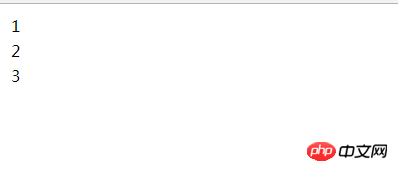
Everyone knows the above, so I won’t go into details here. Back to the code, sometimes we need each line in the tbody to be a sub-component. So how can we write the code? We can write like this and define a global component as follows:

Then we can call it like this in the body:
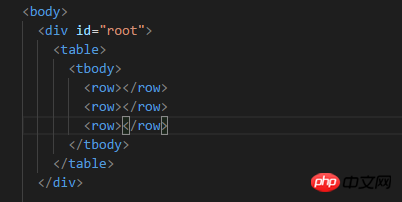
Run results:
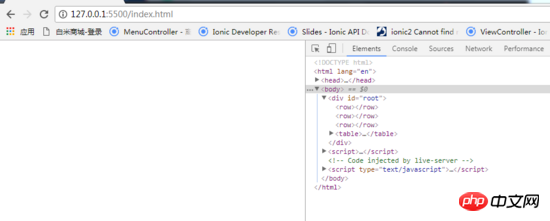
#You can see that row is printed, but it actually does not contain task content. So where is our problem? Back to the code, we found that we did not specify the point to be mounted when creating the vue instance, so we used el to specify the Dom that vue took over, as follows:

Running results :
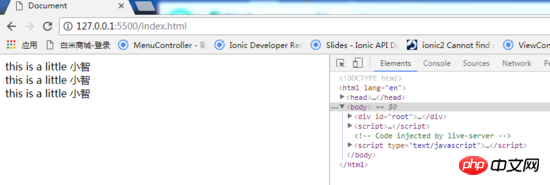
It feels like there is no problem, but is it really the case? We check the DOM structure by checking the elements:

Can you see the error? The normal three tr should be in tbody, but now they are on the same layer as tbody. What's going on?
In the H5 specification, we are required to have a tbody in the table, and tr must be placed in the tbody. Now we use the subcomponent to write row, so our browser will have problems when parsing.
So how should we solve the bug once we encounter this situation? At this time we can solve this problem with the help of the is attribute provided by vue. It's very simple. Only tr can be written in tbody, so we all write tr. But in fact, if we want to display tr, we don't really only display the empty content of tr. We need to display the content of the row component, so what should we do?
We can add an additional attribute is in tr to make it equal to row, as follows:

The meaning of this code is: I want to use a component, but I can't write this component directly, so we wrote a tr. We use is to mean that although I wrote tr, it means it is a row component. This can not only comply with the H5 specifications but also display the content of our component. The program will There will be no more bugs.
Running results:

Everything is normal.
Similarly, we can also use this method when using ul and select tags.
Detail 2
Basic example

We define a The component row contains a piece of text. If we want to extract this piece of text separately and use it to represent it as a variable, then you will most likely write like this:

seems perfect. When you open the browser and run it, you will find that bugs are waving at you:

The main meaning is that data requires a function, not an object. In any case, in the root component, which is the instance of the outermost vue, it is ok for us to define it through the object, but in the sub-component of the non-root component like this The definition doesn't work. The data definition is required to be a function, and this function is required to return an object, as follows:
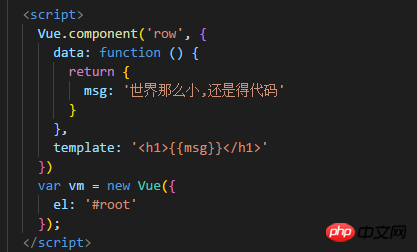
Running result:

This solves the problem.
The reason why this is defined is that unlike the root component, a subcomponent is only called once, but can be called multiple times. Then we do not want the data of each subcomponent to be mixed with other subcomponents. If there is a conflict or each sub-component should have its own data field, this requirement can be achieved by returning an object from the function.
Detail 3
Basic example
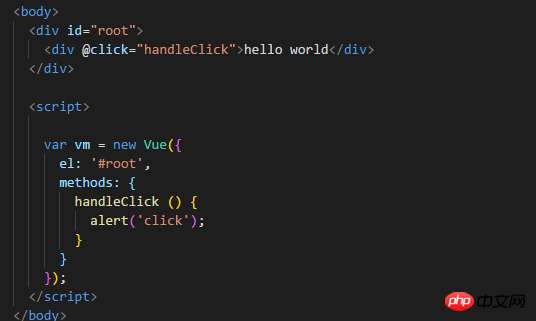
Run it, click and a pop-up click will appear, no problem. Vue does not recommend that we operate Dom in code, but when dealing with some extremely complex animation effects, we really have to operate Dom. So how to operate Dom in Vue? We can reference it through ref, as follows:

At this time we have a need, which is to print out the content when clicking p. We can obtain it through reference p node, and then print the content inside p:
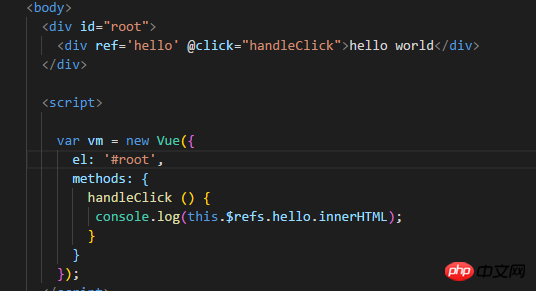
Running results:

I believe I read the case in this article You have mastered the method. For more exciting information, please pay attention to other related articles on the php Chinese website!
Recommended reading:
How to create a pop-up box function in WeChat applet
The above is the detailed content of Detailed analysis of VUE usage. For more information, please follow other related articles on the PHP Chinese website!

Hot AI Tools

Undresser.AI Undress
AI-powered app for creating realistic nude photos

AI Clothes Remover
Online AI tool for removing clothes from photos.

Undress AI Tool
Undress images for free

Clothoff.io
AI clothes remover

Video Face Swap
Swap faces in any video effortlessly with our completely free AI face swap tool!

Hot Article

Hot Tools

Notepad++7.3.1
Easy-to-use and free code editor

SublimeText3 Chinese version
Chinese version, very easy to use

Zend Studio 13.0.1
Powerful PHP integrated development environment

Dreamweaver CS6
Visual web development tools

SublimeText3 Mac version
God-level code editing software (SublimeText3)

Hot Topics
 How to use bootstrap in vue
Apr 07, 2025 pm 11:33 PM
How to use bootstrap in vue
Apr 07, 2025 pm 11:33 PM
Using Bootstrap in Vue.js is divided into five steps: Install Bootstrap. Import Bootstrap in main.js. Use the Bootstrap component directly in the template. Optional: Custom style. Optional: Use plug-ins.
 How to add functions to buttons for vue
Apr 08, 2025 am 08:51 AM
How to add functions to buttons for vue
Apr 08, 2025 am 08:51 AM
You can add a function to the Vue button by binding the button in the HTML template to a method. Define the method and write function logic in the Vue instance.
 How to use watch in vue
Apr 07, 2025 pm 11:36 PM
How to use watch in vue
Apr 07, 2025 pm 11:36 PM
The watch option in Vue.js allows developers to listen for changes in specific data. When the data changes, watch triggers a callback function to perform update views or other tasks. Its configuration options include immediate, which specifies whether to execute a callback immediately, and deep, which specifies whether to recursively listen to changes to objects or arrays.
 What does vue multi-page development mean?
Apr 07, 2025 pm 11:57 PM
What does vue multi-page development mean?
Apr 07, 2025 pm 11:57 PM
Vue multi-page development is a way to build applications using the Vue.js framework, where the application is divided into separate pages: Code Maintenance: Splitting the application into multiple pages can make the code easier to manage and maintain. Modularity: Each page can be used as a separate module for easy reuse and replacement. Simple routing: Navigation between pages can be managed through simple routing configuration. SEO Optimization: Each page has its own URL, which helps SEO.
 How to return to previous page by vue
Apr 07, 2025 pm 11:30 PM
How to return to previous page by vue
Apr 07, 2025 pm 11:30 PM
Vue.js has four methods to return to the previous page: $router.go(-1)$router.back() uses <router-link to="/" component window.history.back(), and the method selection depends on the scene.
 How to reference js file with vue.js
Apr 07, 2025 pm 11:27 PM
How to reference js file with vue.js
Apr 07, 2025 pm 11:27 PM
There are three ways to refer to JS files in Vue.js: directly specify the path using the <script> tag;; dynamic import using the mounted() lifecycle hook; and importing through the Vuex state management library.
 How to use vue traversal
Apr 07, 2025 pm 11:48 PM
How to use vue traversal
Apr 07, 2025 pm 11:48 PM
There are three common methods for Vue.js to traverse arrays and objects: the v-for directive is used to traverse each element and render templates; the v-bind directive can be used with v-for to dynamically set attribute values for each element; and the .map method can convert array elements into new arrays.
 How to jump to the div of vue
Apr 08, 2025 am 09:18 AM
How to jump to the div of vue
Apr 08, 2025 am 09:18 AM
There are two ways to jump div elements in Vue: use Vue Router and add router-link component. Add the @click event listener and call this.$router.push() method to jump.






